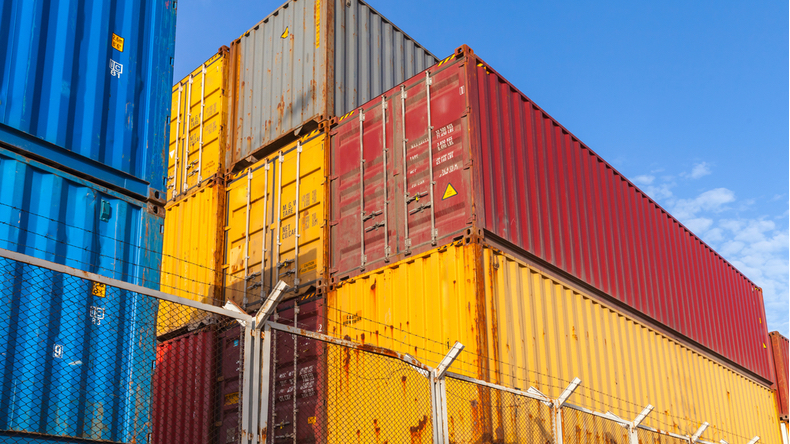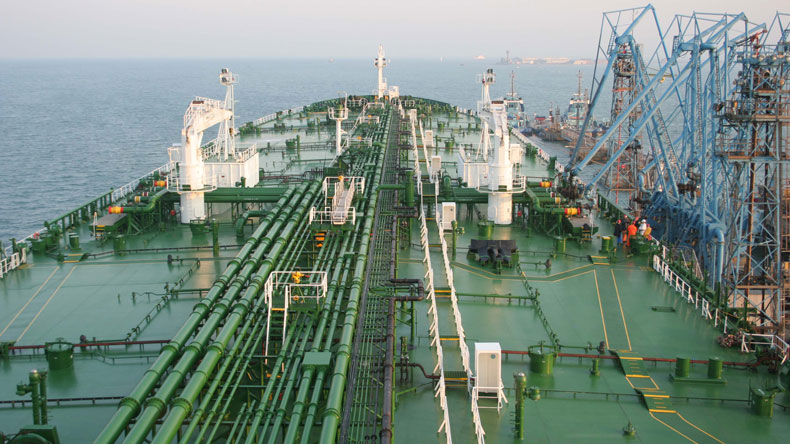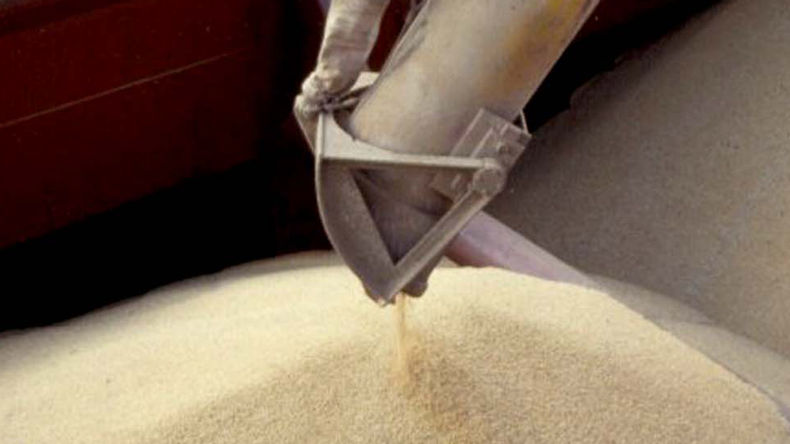According to a Lloyd’s List report, positivity is growing in the dry bulk sector as capsize rates continue to climb despite no sign of container volumes returning to normal levels before the end of this year, says market analysts
The short-term outlook for tanker earnings may still be positive despite market sentiment souring in recent weeks
Container Industry Report
The mood music for container shipping is still positive this week as freight rates remained strong on the key main lane trades.
But undercurrents of concern remain, not least that there is an awfully long way to go until a real recovery in volumes returns to the sector.
In a webinar held last week as part of the Global Liner Shipping series of events, Sea-Intelligence Consulting chief executive Lars Jensen, Container Trades Statistics chief executive Peter Webber and Maritime Strategies International senior analyst Daniel Richards examined how carriers were faring during the crisis and how long it might last.
The bottom line is that volumes are unlikely to return normal levels until 2021 at least.
While Mr Jensen said there was still likely a rebound would come “hard and fast” when it did come, the level of blankings already announced by carriers indicated they had already discounted the idea of there being a peak season this year.
The pandemic, he noted, had accelerated what had been a period of decline in container shipping demand growth.
This had led carriers to perfect the “art of trying to remove capacity to manage an otherwise over-tonnaged situation”.
- This trend was noted by an analysis from Alphaliner, which pointed out that the 11 of the 12 leading container lines had reduced the amount of tonnage they operate.
- Maersk, the world’s largest boxship operator, had reduced its chartered fleet by 55 vessels, taking 236,000 teu out of circulation.
- This won’t have been good news for non-operating owners and it was of little surprise that Costamare announced the final tranche of a $435m refinancing package.
For the carriers themselves, which have seemed to defy gravity during the pandemic, the headline figure masks extreme regional variations in volumes and rates.
But there are still some signs of increased activity on the intra-Asia trades, the bellwether of container shipping and the world’s largest trade by volume. The transport of goods to and from China often acts as a indication of the state of manufacturing in the world’s production leading production centre.
In the past week there have been announcements from Ocean Network Express, and from Regional Container Lines and Wan Hai, all of which are adjusting their network to supply chain and demand changes in the region.
RCL put its moves down to changing supply chains, but any increase in activity should be seen as a good thing for box shipping.
Tanker Market
A low orderbook and slowing fleet growth going through to 2021 means that the crude and product tanker market has grounds for optimism, despite the coronavirus-led demand collapse.
Sentiment in the market has soured considerably in the past few weeks, with rates in decline against a backdrop of a steep fall in crude oil exports.
Earnings have even fallen below operating costs for some smaller tankers.
But US investment bank Jefferies says it maintains a positive outlook for both the crude and product tanker markets going forward, citing a low orderbook and slowing fleet growth through to 2021.
- Refined product tanker net fleet growth is forecast at 3.3% this year and 1.9% in 2021, the US-based bank said in its quarterly shipping review published this week.
- Net fleet growth for crude tankers was estimated at 3.7% and 2% over the same period.
- This forecast is largely in line with the latest estimates in the latest Lloyd’s List Intelligence Shipbuilding Outlook, although overall tankers are still expected to be the fastest-growing segment of ships over the course of the next five years, with 4.9% capacity growth on average over that term.
A low appetite for second-hand product tankers is reflective of the sense that the medium-term outlook for the market remains cloudy at best, according to BIMCO’s chief shipping analyst Peter Sand.
Sale and purchase activity in the oil product tanker market has slowed to the lowest level since 2016 with the second-hand price for a five-year-old medium range tanker down by 15.7% year-to-date, according to BIMCO.
Mr Sand said oil product tanker expectations had been set high for the International Maritime Organization’s sulphur cap, with shipowners contracting for new tonnage and buying up ships in S&P market, pushing up secondhand prices by 20%-25% from 2018 to 2020.
“Some of these expectations were met, but for entirely different reasons than what was initially bet on,” he said. “At the end of the day, it does not matter. Product tanker owners and operators have profited greatly in the first half of 2020 and hopefully bolstered their liquidity buffers for the murky waters that lie in the many months ahead.”
Meanwhile, tanker owners are scrutinising developments in Libya, where any lifting of the five-month blockade on crude exports will offer respite to the aframax and suezmax markets.
Libya’s National Oil Corp said on Monday that it “was hopeful that the regional countries behind the blockades would lift it, after weeks of negotiations”.
Exports have plunged from around 1m barrels per day through 2019 to less than 10% of that level since forces loyal to military commander Khalia Haftar closed off exporting terminals in mid-January. Production was estimated at 80,000 bpd in May, according to the International Energy Agency.
Aframax tankers transport some 60% of cargoes lifted from Libya and suezmax tanker about 35%, with most shipments to Mediterranean refineries in Italy, Spain and France, Lloyd’s List Intelligence data show.
Dry Bulk Market
Robust Chinese steel production was cited as the reason that capesize rates continued to climb in the past week to beyond $30,000 per day on the Baltic Exchange, as higher iron ore volumes from Brazil and Australia were apparent, according to analysts.
Seanergy, a Greek pure capesize owner, was positive on the market prospects due to the strong Chinese steel demand, low iron ore inventories and a recovery in Brazil’s ore exports. Provided there were no disruptions in the second half of the year, the market may closely track the bullish numbers seen in the latter half of 2019. The Nasdaq-listed company was plotting an early reverse stock split to cure its breach of minimum share price rules, it said as it reported first-quarter results.
- Amid the good fortune in the capesize market, another Greek owner GoodBulk managed to seal a $200m refinancing deal. The new loan on improved terms cuts the breakeven rates for the company’s spot-trading ships for the second half and is a reward for responsibility, according to the owner.
- In other company news, Danish owner Norden ordered four ultramaxes from the Nantong Cosco Khi Ship Engineering yard, the Cosco and Kawasaki Heavy Industries shipbuilding joint venture, as the company sought to take advantage of low asset prices. The vessels will be delivered in 2022.
- Greece-based Signal will be launching dry bulk coverage later this year as its market platform and shipmanagement businesses continue to expand despite the pandemic. Launched two years ago, the group’s focus has been on tankers, and the addition of the dry bulk tool, which was expected at the end of last year, is currently being beta-tested by “selected market participants,” it said
Meanwhile, a dry bulk panel presenting in a digital version of the Mare Forum warned listeners that the dry bulk rally could lose steam by the end of the year if global recessionary fears continue which would limit demand for raw materials and other commodities.
And agri-trader Archer Daniels Midland said one of its prime US terminals for the export of grains will remain offline until early next year because of delays in repair work due to high water levels. That means the Reserve terminal in Louisiana will miss a key portion of the US crop-cargo season, with most of the country’s soyabeans exported from the beginning of November through to the end of January.
Did you subscribe to our daily newsletter?
It’s Free! Click here to Subscribe!
Source: Lloyd’s List



























